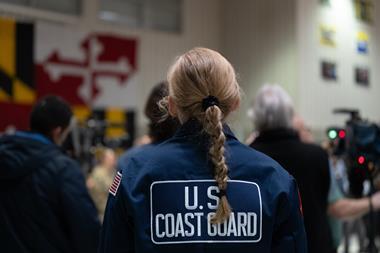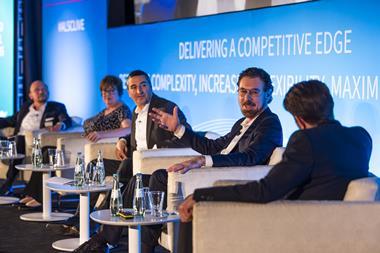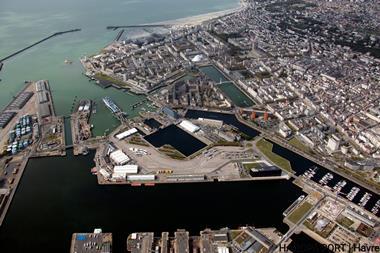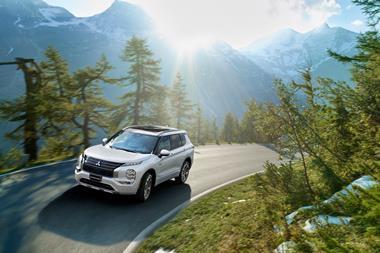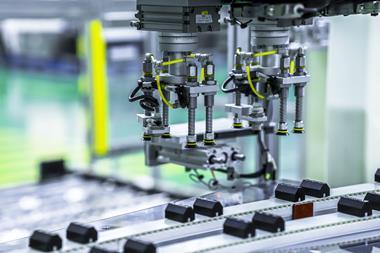- Primary markets and the potential on the rails
- Short sea horizons/ Mexican road routes
- Volume, frequency and a turning of the tide
Mexico’s export links to the US are in the balance as the country’s production is set to rise and OEMs consider rail and sea options, report Jonathan Ward and Christopher Ludwig.
Mexico is an appealing location for carmakers, sandwiched as it is between the recovering US market and the rapidly growing Latin American economies with good trading relationships both ways. A well-established car manufacturing sector, a growing supplier base and competitive labour costs are further incentives to locate there.
Last year, Mexico exported nearly 2.4m vehicles, making it the world’s fourth largest exporter. The country’s rise has been fast – in 2010, it was eighth – and it could move further up the charts as Honda, Mazda, Audi and Nissan all have new plant investments underway in Mexico, and OEMs with existing plants, including Fiat-Chrysler, Ford and General Motors, are investing heavily. Expectations are that production could reach 4m units near the end of the decade. Since Mexico’s domestic market is relatively small at 900,000 units a year, and forecasted to grow by around 5% annually, the overwhelming majority of new capacity will be for export.
Close connections
Mexico has developed from an exporting satellite of the US into a global vehicle hub. The share of non-US destinations for Mexican-produced vehicles grew from 30% to 36% between 2010 and 2011, driven principally by demand from Latin America, which now accounts for around 15.5% of exports, according to the Mexican carmaker’s association AMIA.
But the US is still the dominant destination. Mexican exports to the country were up 10.5% in 2012 at 1.5m units. By 2015, cross-border flows are predicted to increase by a further 1m units a year, which has serious implications for the logistics links between the two countries.
The US and Mexico share around 3,000km of land border, so it is no surprise that land modes are most used to move vehicles north, with rail dominant. Road transport, while common for moving parts across the border, is generally avoided for vehicles because of congestion and old restrictions on Mexican trucks and drivers in the US. However, Chrysler is about to shift its exports of a new van onto road transport.
Short-sea shipping, while used regularly by a few OEMs, has made up a minority share of exports and is often used as a buffer to rail exports, but ocean providers could be tempted to introduce more services as Mexican production increases. Some carmakers, like Honda, are already planning to diversify export routes between rail and sea.

On track to expand
With a significant share of new vehicle production planned for the states of Guanajuato and Mexico, each about 1,500km or so from the US border, North American rail players are excited about the growth potential for exports by rail, and bullish about their ability to meet demand.
At Union Pacific Railroad, Linda Brandl, vice-president and general manager of automotive business, says her company is prepared for the volume increases. “With capacity enhancements in border facility infrastructure, track improvements and multi-level investments, we do not anticipate operating constraints now or in the near future. We are also preparing for longer-term growth in Mexico,” she says.
But the rail industry faces potential pinch poits as automotive traffic rises, particularly at border crossings where loads have to pass through customs then switch from Mexican to US rail providers or trucks for onward road transport.
There are other potential network issues. American Honda’s Dennis Manns, for example, points out that a railway interchange lies in the middle of Celaya, close to Honda’s new plant, which slows down traffic. A project to bypass this may not be finished before production starts next year.
 Concerns also exist about wagon capacity and the impact that rising volume out of Mexico will have across the entire North American network. Ford, which has two plants in Mexico, sends most of its exports to the US by rail. Bill Mikkelsen, manager of North American vehicle logistics, says that all transport modes are going to have to respond to this growth. “Like all OEMs that ship in North America, Ford is concerned that the pace of railcar capacity and rail network velocity improvements are lagging behind the SAAR volume recovery,” h e s ays. “At times of capacity constraints and rail network performance issues, remote locations, such as Mexico and Canada, realise the greatest shortage of equipment. As OEM production in Belen, New Mexico. Asplund also points to a programme that Ferromex has at Juarez, together with Mexican federal, state and city governments, to reduce the impact of rail operations on the city while improving the performance of the interchange between the US and Mexico.
Concerns also exist about wagon capacity and the impact that rising volume out of Mexico will have across the entire North American network. Ford, which has two plants in Mexico, sends most of its exports to the US by rail. Bill Mikkelsen, manager of North American vehicle logistics, says that all transport modes are going to have to respond to this growth. “Like all OEMs that ship in North America, Ford is concerned that the pace of railcar capacity and rail network velocity improvements are lagging behind the SAAR volume recovery,” h e s ays. “At times of capacity constraints and rail network performance issues, remote locations, such as Mexico and Canada, realise the greatest shortage of equipment. As OEM production in Belen, New Mexico. Asplund also points to a programme that Ferromex has at Juarez, together with Mexican federal, state and city governments, to reduce the impact of rail operations on the city while improving the performance of the interchange between the US and Mexico.
“Last year, we could only operate for nine hours at that crossing,” Asplund explains. “The private and public sector in Mexico came together to start a project to put in grade separations between the rail line and principal roadways, with the first completed last year and two more under way this year. By the end of 2013 we [will be] on track to double the hours at the interchange and take a lot of congestion away from motorists on both sides of the border.”
Railways are also investing in more wagons. BNSF has placed orders that will increase its fleet by 20% this year and it uses high-capacity Automax cars wherever possible. “You can put 24 Honda Fits into an Automax, compared with 10 on a conventional bi-level,” notes Dave Fleenor, BNSF’s assistant vice-president of automotive.
Improving flexibility and performance
In the immediate term, it may not be the rail companies’ reluctance to invest in rolling stock that constrains capacity, but the rail equipment industry’s inability to deliver them. Steve Evans, assistant vice-president of ports and international at Norfolk Southern Railroad, says that while pooling operator TTX does a good job of forecasting future rolling stock requirements, there are relatively few companies that make multilevel wagons. “And their order books are pretty full right now,” says Evans. My feeling is that we’ll be playing catch-up for a couple of years.”
"As production increases in Mexico, all modes - rail, car, haul, and short sea - will need to accommodate [it]" - Bill Mikkelsen, Ford
As well having enough wagons available, lines have to ensure they are of the right type. As automotive fashions change, companies have to rebalance fleets between tri-level wagons, which carry more vehicles, and bi-levels, which carry larger ones such as SUVs and pickup trucks. The desire to increase flexibility has led some railways to use more adjustable wagons. An alternative to Automax is Union Pacific’s AutoFlex, a standard multi-level that can be converted from a tri-level to a bi-level in approximately 20 man-hours.
"If gas prices rise and consumer preference changes to smaller vehicles that are carried on a tri-level, or if gas prices drop and consumers want larger vehicles or SUVs that are carried on a bi-level, we will be prepared to handle it with the AutoFlex,” claims Linda Brandl.
But beyond adding more equipment, rail operators say they are working hard to squeeze maximum productivity out of their assets. BNSF’s Nate Asplund cites the Business Exchange (BEX), a web-based system designed to smooth information flow between his company, Union Pacific, Ferromex, Mexico’s Aduana and US Customs and Border Protection. In operation since 2006, BEX gives the rail operators and customs authorities “complete visibility of cars and cargoes coming to the various gateways, so we can plan our windows and movements more efficiently.” Brandl says that industry efforts to improve operation efficiency are delivering significant results. “Year-over-year from 2011 to 2012, industry multilevel cycle time improved by 14% for bi-levels and more than 19% for tri-levels,” she explains.
A brief history of short sea
While rail looks likely to benefit from the growth of Mexican exports, the potential shortages have encouraged carmakers and shipping lines to revive discussions about increasing short sea services in North America. The creation of frequent, sustainable shuttle services between the US and Mexico would represent a big change in the continent’s multimodal network. Examples already show that rail and sea can be complimentary modes for export flows, and need not be opposing forces.
The history of short sea services between the US and Mexico is complex and inconsistent, with a series of starts and stops over the last decade or more. Susan Serrano, global key account manager at Höegh Autoliners, recalls that the shipping line was one of the first to offer a weekly shuttle service, back in the early 2000s, for General Motors out of the east coast port of Altamira. “It was short lived,” she admits.
One shipping line executive, speaking anonymously, claims that there has been a consistent pattern whereby because of capacity shortages or rate negotiations, OEMs move some export volume from rail to sea “always with the promise to ocean carriers that more would soon come”. However, as soon as there was more railway capacity available, ocean volumes were often switched back to rail, as shipping lines were unable to match rail’s lower rates and more frequent services.
According to the executive, this on-off cycle is partly why there are currently no – or very few – shuttle services that connect Mexico to the US, aside from occasional chartered vessels. GM and Chrysler, both major exporters from Mexico, move all exports by rail, although GM does buy spot shipping tonnage. But other OEMs supplement their rail flows with a regular sea service. Since 2003, for example, Nissan has exported a minority share of its US-bound vehicles from Veracruz to the ports of Jacksonville, Florida and Baltimore, Maryland, sending the rest by rail, according to Ben Shain, senior manager for vehicle logistics at Nissan North America. “We want to provide an alternative transportation method to rail that allows us to maximise our service to dealers and support capacity requirements,” he says.
For the last few years, Ford has also been sending a share of its exports by sea to ports on the US and Canadian east coast, which Bill Mikkelsen says has been “effective”.
Not enough volume or not enough frequency?
As these services demonstrate, most current sea trades are only incremental volume to shipping lines. They tend to be built by adding a few stops in the US from Veracruz as part of a larger deep ocean route connecting Asia, Europe or the Middle East. Höegh Autoliners, for example, carries Nissan vehicles as a subcontractor from the main carrier, NMCC, about twice a month on ships calling in Europe, the Caribbean and the US east coast, according to Serrano.
Volkswagen is the most significant user of short sea out of Mexico today. Sources point to figures from import/export data specialist PIERS, which show that the carmaker’s 265,000 imports from Mexico last year to the US moved in roughly equal halves between rail and sea. Again, however, this volume is not part of a liner-operated shuttle, but rather the VW Group charters vessels itself. These ships carry vehicles from Veracruz to Brunswick, Georgia and Davisville, Rhode Island – and occasionally Houston, Texas if rail capacity is tight – before sailing back half full to Emden, Germany, where they discharge and reload with vehicles for North America.
While shipping lines say that the lack of committed volume to ocean has prevented them from offering frequent services, some OEMs reverse the blame. “Not knowing if we would get a consistent, reliable service on short-sea routes has been a big barrier,” says Steve Tripp, head of worldwide vehicle transportation at Chrysler.
“Its always a Catch-22 with vessels,” adds Bill Kerrigan of logistics consultancy KGI. “Without the demand you won’t get the service, without the service, you won’t get the demand.”
Time to ride the Mexican wave?
As carmakers look for supplements to rail from Mexico, there could be more opportunities to break the cycle of temporary volume shifts to ocean. But until now, at least, most carmakers and shipping lines have been cautious in describing their plans. “We are always looking at short sea, especially in the event of a supply disruption, like a shortage of railcars,” says Tripp. But he adds that Chrysler will allocate volume to the railways first. “We are always watching capacity at our primary border crossing at Laredo, but we have been working with our provider, Kansas City Southern, to improve processes there. We h a v e a good relationship with the railways and we want to ensure we are honouring our commitments to them.”
"From 2011 to 2012, industry multilevel cycle time improved by 14% for bi-levels and more than 19% for tri-levels" - Linda Brandl, Union Pacific Railroad
In an interview for the January-March 2013 issue of Automotive Logistics, GM’s global head of logistics, Christine Krathwohl, made a similar point about using rail first. But she nevertheless expected ocean to increase as a contracted mode in the coming years across “all carmakers” in North America.
Ben Shain says Nissan will monitor the situation, but makes no predictions. “As part of our capacity management, we continuously evaluate this routing to ensure we are prepared for increased volumes from Mexico to the US market,” he says.

Höegh’s Serrano says OEMs like Honda will be instrumental in developing short sea, particularly if it encourages other OEMs to share services. She says that no one carmaker’s volume alone, with any one shipping line, will be enough to make a weekly service viable. “However, if OEMs collaborate – which is awfully difficult because of anti-trust and competitive reasons – to pool their volumes, the shipping industry could create more frequent service,” she says. “However, we can’t make it work if we have to compete with rail rates.”
The waiting game
Even if more OEMs committed volumes, short-sea shipping would need to overcome potential pinch points too. Rail operators point to tight capacity at Veracruz, as well as limited road and rail links inland. “We’ve done feasibility studies using short-sea shipping links to Veracruz,” notes Steve Evans of Norfolk Southern, “but we just couldn’t figure out a way of getting things consistently into and out of the port.”
Other ports face issues too, including disputes over terminal concessions at Lázaro Cárdenas and, according to a shipping line executive, the lack of a connecting rail link at Altamira.
Evans points to another alternative in the form of combined rail-short sea between the US and southern Mexico. The Central Gulf Railway, for example, is a rail barge operation that runs two vessels between Mobile, Alabama and Coatzacoalcos, Veracruz. The journey takes four days and the twin-deck vessels can carry up to 115 rail wagons. The route currently sees little automotive business, however.
With many different contingencies being drawn up in the background, the future shape of Mexico’s vehicles export infrastructure is far from clear, and many in the industry are playing a waiting game. “We know that the rail companies are buying new railcars at a healthy rate,” concludes Chrysler’s Tripp. “But it is harder to know if what they are doing is adequate to meet all the new demand as it comes on stream. Will the infrastructure really be there? Will the railcars really be there? The rail companies say that everything will be in place, and we need them to be right.”

















